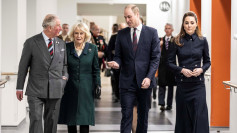Australia's central bank has indicated that interest rates will likely remain at their current 12-year high for an "extended period," signaling that a rate cut is unlikely in the near term as policymakers continue their fight against inflation. This stance was revealed in the minutes from the Reserve Bank of Australia's (RBA) August 5-6 meeting, which emphasized the need for sustained restrictive monetary policy to ensure inflation returns to its target range of 2-3%.
The RBA's decision to hold the cash rate steady at 4.35% came after extensive discussions about whether further tightening was necessary. Ultimately, the board concluded that maintaining the current rate would best balance the risks associated with both inflation and the labor market, given the prevailing uncertainties. "Holding the cash rate steady best balanced the risks surrounding the outlook for both inflation and the labor market," the minutes noted, reinforcing the RBA's cautious approach amid mixed economic signals.
Despite the market's expectation of a possible rate cut by the end of the year, the RBA expressed skepticism about the likelihood of such a move, stating that current market pricing for rate cuts was "incompatible" with bringing inflation back to target within a reasonable timeframe. The minutes highlighted the central bank's concern that easing rates too soon could undermine efforts to control inflation, which remains elevated at 3.9%.
The RBA's cautious stance contrasts with the monetary easing seen in other developed economies, including New Zealand, Canada, and the United Kingdom, where central banks have started to lower rates. The minutes acknowledged this global trend but pointed out that Australia's situation is different, as the RBA had raised rates more gradually than its peers. Consequently, the RBA's benchmark rate is about 1 percentage point lower than those in some other advanced economies.
"Monetary policy will need to be sufficiently restrictive until members are confident that inflation is moving sustainably towards the target range," the minutes stated, indicating that the RBA is prepared to maintain high rates for as long as necessary to achieve its inflation goals. The board also stressed the importance of remaining "vigilant to upside risks to inflation," particularly given the persistence of cost pressures reported by businesses.
The RBA's decision to hold rates steady for the past six meetings underscores its cautious approach amid a complex economic environment. While financial conditions have eased slightly, with housing prices and credit growth picking up, the board noted that underlying inflation remains stubbornly high. The minutes revealed that the RBA spent considerable time discussing the risks associated with inflation, particularly the slow pace of disinflation and the potential for inflation to remain above target for an extended period.
One of the key factors influencing the RBA's decision-making is the uncertain outlook for the labor market. The board acknowledged that while the Australian labor market has shown resilience, there are concerns about the potential impact of prolonged high rates on employment and wage growth. The RBA has repeatedly emphasized the need to preserve recent labor market gains while continuing to combat inflation.
Market expectations for a rate cut by December remain strong, with financial market pricing implying a high probability of a cut by year-end. However, the RBA's minutes suggest that the central bank is not inclined to follow this path unless there is clear evidence that inflation is firmly on track to return to the target range.






